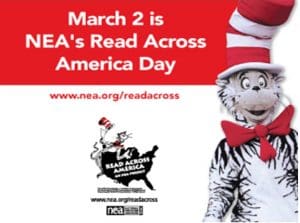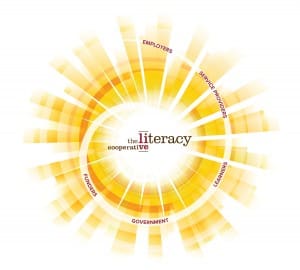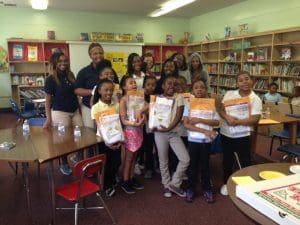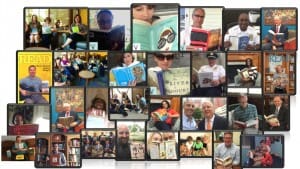Building Your Baby’s Brain
 “They grow so fast,” is a common phrase parents of newborns and toddlers hear often. This is a true statement not just for their physical growth but their mental and developmental growth as well. Did you know that by the end of age 3, a child’s brain will have completed 85% of its physical growth? In these handful of years, the brain strengthens many of the areas of the brain that a child will need throughout their lifetime.
“They grow so fast,” is a common phrase parents of newborns and toddlers hear often. This is a true statement not just for their physical growth but their mental and developmental growth as well. Did you know that by the end of age 3, a child’s brain will have completed 85% of its physical growth? In these handful of years, the brain strengthens many of the areas of the brain that a child will need throughout their lifetime.
The brain is made-up of the neurons which broadcast messages using electrical and chemical signals. The connections between neurons are called synapses. These messages are the physical basis of learning and memory and are what build a baby’s brain. What the brain does is create a surplus of synapses and neurons, twice as many synapses as it will have in adulthood.
Throughout childhood and adolescence, a process called pruning takes place. The process involves keeping synapses that are used often and that are strong while removing synapses that are weak or rarely used. An example would be if a child hears language and conversation often, the language area of their brain strengthens and grows. If a child is rarely spoken to or hears most of their vocabulary and language from a screen, that area weakens and does not develop to its full potential. Genes provide a blueprint for the brain, but a child’s environment and experiences carry out the construction.
This construction and pruning process is why it is so important to talk, read and sing with your child from the very beginning of their lives. Hearing your voice, taking in the sounds and words around them allow them to build that language area of their brain. Strengthening their vocabularies and literacy skills will be essential for their success later on in their lives.
In 1995, Betty Hart and Todd R. Risely conducted a study that found children from low-income families will have heard 30 million less words than children from more affluent families by the age of four. They are not hearing words and are not using the language area of their brain which in turn means the brain is likely to prune those synapses, weakening that area. This is a process not easily reversed. This gap creates a serious disadvantage for children, a disadvantage that will follow them throughout their lives.
Bridging the gap and strengthening these synapses is not a herculean effort. It does not take expensive equipment or extra schooling. It is actually something that can be done easily and every day; talking with your child. Talking, singing and reading may seem like simple tasks but they are simple tasks that can make all the difference.
By talking with your child each day, while driving, cooking or getting ready in the morning, you are strengthening that vital part of their brain. You don’t have to have long complicated conversations. Simply describing how you are cutting up a banana for breakfast or what color the street signs you are driving by are, utilizes these synapses. Reading a book before bed and singing while cooking dinner also increase use of these vital areas of the brain.
 The first few years of a child’s life are essential for development. All parents want their children to succeed. One way to ensure this future success is by making sure that a child’s environment will aid their brain development. You feed your child nutritious food to help their bodies grow. Their brains need the same care and nutrition, provided through daily interactions. Adding talking, singing and reading to your everyday routine will help strengthen these vital areas of the brain.
The first few years of a child’s life are essential for development. All parents want their children to succeed. One way to ensure this future success is by making sure that a child’s environment will aid their brain development. You feed your child nutritious food to help their bodies grow. Their brains need the same care and nutrition, provided through daily interactions. Adding talking, singing and reading to your everyday routine will help strengthen these vital areas of the brain.
This year we are working to increase awareness about the 30 million word gap and share ways to close it. Be sure to follow us on Twitter, Facebook and Instagram as well as follow #wordgapcle to stay up to date on what we are doing and to learn more about the word gap and to promote the power of parent talk. Also be sure to share how you are working to build your child’s brain. Share pictures or videos of you reading or singing together with #wordgapcle. Help us spread awareness and show that it is possible to begin to close the gap.
(Article used for information in this post: http://www.urbanchildinstitute.org/why-0-3/baby-and-brain)

 Have you ever stopped and thought about how often you speak with your child throughout the day? Do you talk to them in the car about the color of street signs or point out shapes? When you are cooking do you talk about the steps you are taking or what ingredients you are using? Do you ask them questions about what they are playing or about the TV show they are watching or the book they are reading?
Have you ever stopped and thought about how often you speak with your child throughout the day? Do you talk to them in the car about the color of street signs or point out shapes? When you are cooking do you talk about the steps you are taking or what ingredients you are using? Do you ask them questions about what they are playing or about the TV show they are watching or the book they are reading? At The Literacy Cooperative, our mission is to work to advance literacy by raising awareness of the issue, promoting effective public advocacy and fostering a delivery system with maximum impact on the region. This #GivingTuesday we need your help to be able to continue to fulfill our mission.
At The Literacy Cooperative, our mission is to work to advance literacy by raising awareness of the issue, promoting effective public advocacy and fostering a delivery system with maximum impact on the region. This #GivingTuesday we need your help to be able to continue to fulfill our mission. Assure Ready Kids in Cuyahoga County). We are coordinating our community’s Reach Out and Read program to help new parents understand the importance of reading to their children daily and connecting them with infant and toddler programs to help in the learning process. Using an evidence based program, STEP, Supporting Tutors, Engaging Pupils, we trained hundreds of tutors to use structured lesson plans to assist children struggling with reading. We continuously advocate for adult literacy services connected to career pathways to allow low-literate adults to engage in training and employment that leads to family-sustaining wages. That’s why we are leading a partnership with northeast Ohio adult education providers and workforce development agencies to develop and implement contextualized curriculum programs in the Manufacturing, Healthcare, Hospitality and IT sectors. We advocate for the increase of adult and early literacy funding and stronger policies that provide greater opportunities for our low-literate residents to receive support and wrap around services to succeed. We partake in days like International Literacy Day and Read Across America day to bring awareness to the importance of literacy. To learn more about our work, be sure to take a look at our
Assure Ready Kids in Cuyahoga County). We are coordinating our community’s Reach Out and Read program to help new parents understand the importance of reading to their children daily and connecting them with infant and toddler programs to help in the learning process. Using an evidence based program, STEP, Supporting Tutors, Engaging Pupils, we trained hundreds of tutors to use structured lesson plans to assist children struggling with reading. We continuously advocate for adult literacy services connected to career pathways to allow low-literate adults to engage in training and employment that leads to family-sustaining wages. That’s why we are leading a partnership with northeast Ohio adult education providers and workforce development agencies to develop and implement contextualized curriculum programs in the Manufacturing, Healthcare, Hospitality and IT sectors. We advocate for the increase of adult and early literacy funding and stronger policies that provide greater opportunities for our low-literate residents to receive support and wrap around services to succeed. We partake in days like International Literacy Day and Read Across America day to bring awareness to the importance of literacy. To learn more about our work, be sure to take a look at our 